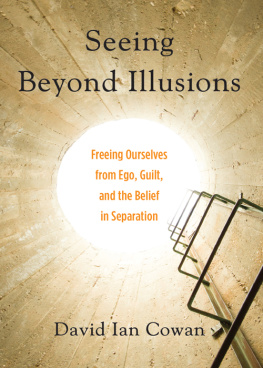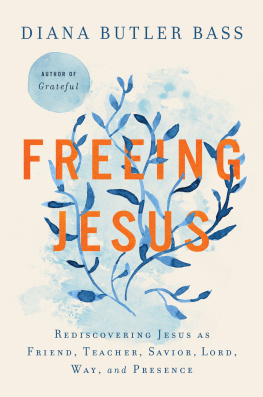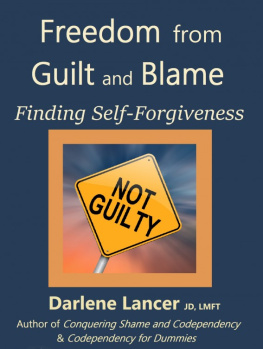
This edition first published in 2015 by Weiser Books
Red Wheel/Weiser, LLC
With offices at:
665 Third Street, Suite 400
San Francisco, CA 94107
www.redwheelweiser.com
Copyright 2015 by David Ian Cowan
All rights reserved. No part of this publication may be reproduced or transmitted in any form or by any means, electronic or mechanical, including photocopying, recording, or by any information storage and retrieval system, without permission in writing from Red Wheel/Weiser, LLC. Reviewers may quote brief passages.
ISBN: 978-1-57863-574-0
Library of Congress Cataloging-in-Publication Data available upon request.
Cover design by Jim Warner
Cover photograph Asaf Eliason/shutterstock
Interior by Maureen Forys, Happenstance Type-O-Ram
Typeset in Goudy Old Style and Din
Printed in the United States of America.
EBM
10 9 8 7 6 5 4 3 2 1
www.redwheelweiser.com
www.redwheelweiser.com/newsletter
I dedicate this work to my mother, Dorothy Alberta Cowan (1925-2014) whose love, devotion and prayers will always be a guiding light in my life. Thanks, Mom, you're the best.
Contents
Foreword
Ken Carey
T he simple prose and vivid images evoked in David Ian Cowan's most recent offering do not so much teach us as help us remember what we have always knownthe spiritual genius behind the structure of our Universe, Life! Beauteous Life, brimming over with the very celestial music that brings us into being, with new sounds on new frequencies that gently blow away the disharmonious lies of separation that obscure our vision of the perfection that exists all around us.
And forgiveness! The sections of this bookthankfully longthat deal with the topic surpass all that I have read before, both in substance, scope, depth, and implication. And surprisingly, they do so in simple, clear, and easy-to-understand language. Of all the material I have encountered on the topic, including my own writing, I would recommend this book to anyone even remotely interested in a permanent elevation of consciousness, the healing of self or a loved one, and oh so many other breakthroughs in an array of fields. It is not overstatement to say that, when understood and practiced, forgiveness, as so thoroughly explored in this book, is our ticket to a New Heaven and a New Earth, and most of all, to the unification of Creator and Creation.
I began reading Seeing Beyond Illusions as I would any other book, when gradually a feeling crept over me that brought me up short: It was as if I were reading my own thoughts as they instantaneously appeared before me. Or was the smooth flow of meaning in the words causing my thoughts to recede behind a river's shorelines and lazy waters in a hazy but deliciously beckoning direction? Before long, my plans for the evening receded into the background. Hours passed. Awareness of turning pages, the knowledge I was reading, faded into smooth, strong thought-currents that carried me along.
Yes, a river it was. It could have been a preference of my mind, or the manner in which it is being nurtured, but I remember Seeing Beyond Illusions more visually than conceptually, more in terms of the river reflections still before me than the poetry that triggered them. Before you flip to and begin reading this extraordinary material for yourself, a few more words on my take.
The river I was riding was relatively straight and calm, about seventy-five yards wide and wholly without rapids. I was traveling through the One Moment, the One Presence, the Alpha and Omega of All That Is. Vegetation along the shoreline was beautiful beyond superlatives, and even as I looked to left and right I recognized the terrain as painting from my own brush. I was drawing the scenery both in and into my attentive field; indeed, I was creating it. Turning my head upstream, my chest released tensions I had not consciously known I was carrying. Subtle new sounds and songs in soft and ever-changing languages drifted through my mind, new fragrances enticed me from among the trees that lined the shore, yet it was when I turned to observe the shorelines past that I was suddenly engulfed in joy. I'm not even going to try to describe this. Along both banks of the river, as far as I could see, was the same perfect, lushand oh so beautifulvegetation that I had been creating in that very present moment along the shores to either side.
Behind me, upstream, were no blank empty stretches of desert to signify my lapses into cultural beliefs. The dark ages while I had dreamed my troubled dreams showed only the same entwined vegetation of perfect love and perfect truth of that which I had created consciously.
So even while I was sleeping the sleep of an individual apart from God and Nature, I/You/We's most Primal Creative Power had penetrated the shell of my illusions to create, through the microscopic, myopic me, everything My Eternal Spirit had wanted to be.
No, it was all as beautiful and whole as what I had and still am creating consciously. But even during those years when ego had dethroned Spirit from the decision-making citadel of my brain, my Spirit, our Whole Spirit, was still ensuring the perfection of all things. Everything my ego showed me was illusion. This was quite possibly the greatest lasting gift I have taken away from this book.
KEN CAREY
March, 2014
Introduction
W hen I read a book I am certainly absorbing information, but at the same time, from a different part of my mind, I am absorbing essence. This is the word I use to describe the subtle feeling that a book offers beneath the concepts it describes. Although I most likely won't recall chapter and verse what was said, I can still tell you today how a certain book left me feeling. The words roll off, but the essence, the true learning, remains.
I have long recognized that our minds are multifaceted. It is no secret that the thinking part of the brain, a tiny region in the left hemisphere known as Broca's Region, is responsible for linking language to experience. This function accounts for only 5 percent of our total brain capacity. Linguistic thinking is obviously functional and necessary, even in its inherent limitations. And what are those limitations?
A primary limitation of the thinking mind is its relentless drive to create continuity, and thus meaning, by linking one thought logically to the next. The result of this process is called linear logic. This logic attempts to create a mental chain of cause-and-effect relationships, and is often associated with what we would also call left brain functioningthe greater activity of the left hemisphere of the brain in this particular mode. To see this linking function in action, just listen in on any conversation. Notice how each contribution to the conversation is directly triggered by what was just said by the other person. And the listener's response continues to contribute to this chain of logical references. Of course this is all perfectly logical and natural from the verbal mind's perspective, so what is the big deal in even noticing it?
In order to answer that question, we will need to examine thought itself. A thought arrives wrapped up in a word or phrase. More accurately, the thought first arrives as a mental image or picture to which we automatically ascribe meaning with some past-referenced word, phrase, or image. Psychologists agree that all thoughts arrive first as images. The verbal label we choose usually has an agreed-upon meaning for ourselves and those we interact with. Many of our jokes and humorous moments come when the assumption of shared meaning is derailed momentarily, reminding us how fragile our sense of agreed meaning can be.
Next page










